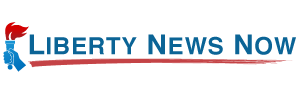Washington D.C. was alive with a buzz as approximately 50 teams of public health specialists and programmers met for a Code-A-Thon, which was organized by the Department of Health and Human Sciences (HHS), on Wednesday and Thursday. The Code-A-Thon was held to develop a software to help in fighting the battle against Opioid crisis faced by America.
During these two days, each team of three to five participants used the federal, state, local, and private sector data, some of which was released and made accessible for the very first time and was combined with the most modern computer science techniques that may be used to recognize certain patterns and trends in the opioid-related uses and abuses.
The teams went on to work for three very different approaches, the treatment, the usage and then the ways for prevention. The treatment part revolved around the idea of helping the state, locals, and the federal government officials to be more effective while connecting the users with proper treatments for their respective addictions and their rehabilitation. The usage area focused on identifying the potential danger and the population that is using and abusing the opioids. Lastly, prevention is all about effectively tracking down the dispersion of these illegal drugs to the masses.
The winners one for each of the track; used this data for different sorts of applications. A team that belonged to Visionist. Inc. from the prevention category developed a perfect method for 5 states to easily identify the severe needs of takeback programs. It reclaimed the prescribed opioids and helped in completely removing these drugs out of the entire circulation. Another team from Origami Innovation team – treatment track, succeeding in tracking the outbreaks in real time. And the Opioid Prescriber Awareness Tool team, from the treatment track got a tool that would allow the users to have a complete visualization of the prescription patterns.
All three teams received the $10,000 prize.
“HHS’s code-a-thon was a major step forward in the efforts to use data to address the opioid crisis,” said the Acting HHS Secretary, Eric Hargan. “The innovative ideas developed today could turn into tomorrow’s solutions as we work to combat the scourge of opioid addiction sweeping the nation. On behalf of the administration, I commend all of our technology partners and the HHS staff for their hard work on this unprecedented event.”
Before the code-a-thon, a half-day symposium was conducted, which went on to bring together the computer and various policy experts from the public and private sectors, who then discussed their respective work at the intersection of healthcare and computing. It also featured addresses from Hargan and Vice Adm. Jerome M. Adams, the U.S. Surgeon General.
However, the coders were the essence and the soul of the two-day event. One team, from the consultancy Booz Allen Hamilton, spoke to the news reporters about its involvement.
Jessica Bonnie, a data scientist with BAH, had already worked on another of these opioid code-a-thons, which were run by the state of Virginia.
“We all have a really strong interest in the topic. People are becoming more and more aware of it, so we jumped at the chance to participate in something like this,” she said.
Bonnie further saw the code-a-thon as the perfect way to do her part in aiding in fighting the opioid epidemic.
“The topic is so pervasive now, and growing at such a tremendous rate, that as a tech person, I’m not going to be able to be treating people, but if there’s something that I can do to reduce the morbidity, then I feel that that’s a really worthy endeavor,” she went on to say.






























